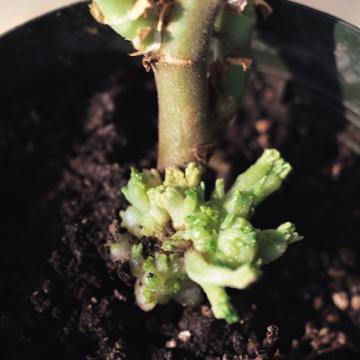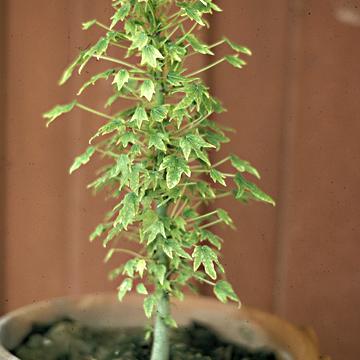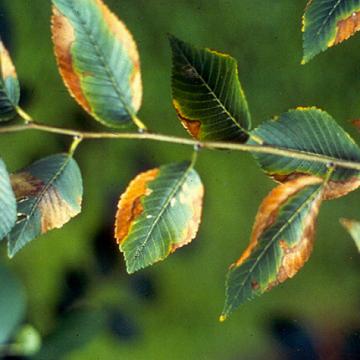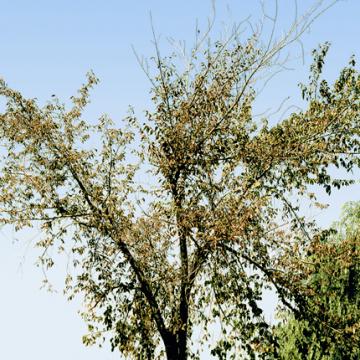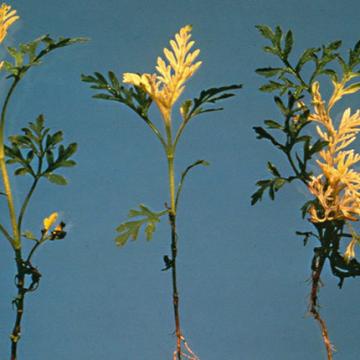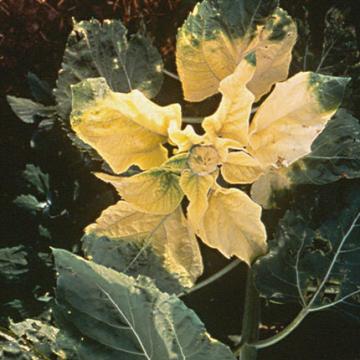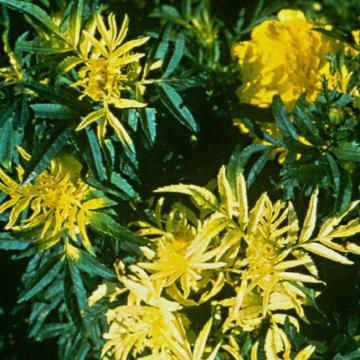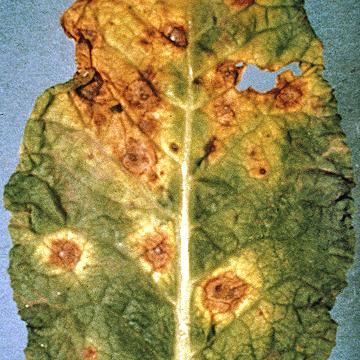DISEASE: Bacterial fasciation
HOST: Geranium
Plant with proliferation of shoots at crown.
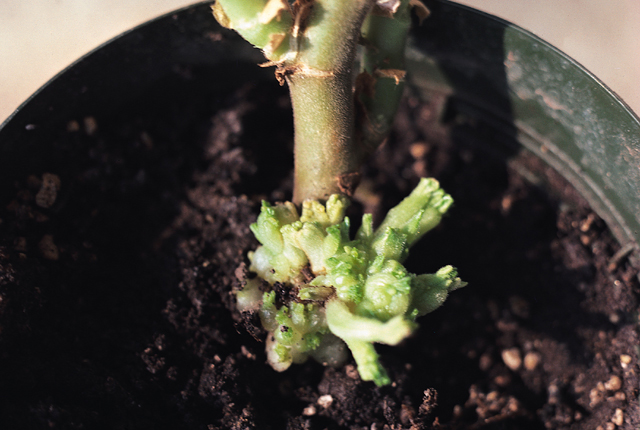
Bacterial fasciation | Geranium
DISEASE: Bacterial fasciation
HOST: Geranium (Pelargonium grandiflorum)
PATHOGEN: Rhodococcus fascians
SOURCE: M. Daughtrey
DISEASE: Bacterial fasciation
HOST: Papaya
Fasciation symptoms of papaya. Causal agent is unknown.
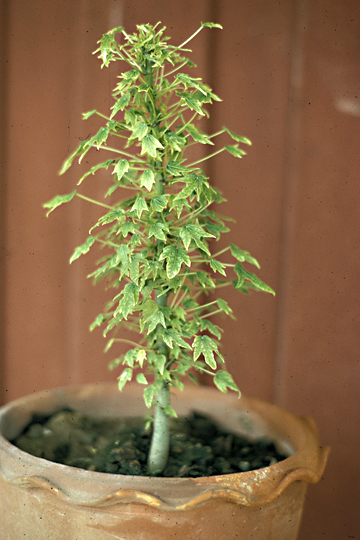
Bacterial fasciation | Papaya
DISEASE: Bacterial fasciation
HOST: Papaya (Carica papaya)
PATHOGEN: Causal agent unknown
SOURCE: A. Alvarez
DISEASE: Elm leaf scorch
HOST: Elm
Diseased tree with scorch at leaf margins.
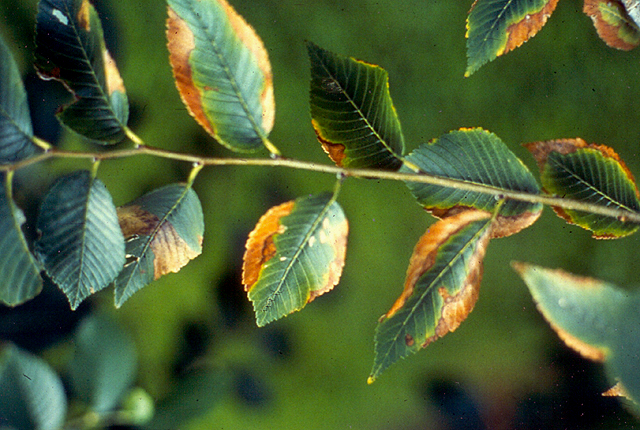
Elm leaf scorch | Elm
DISEASE: Elm leaf scorch
HOST: Elm (Ulmus americana)
PATHOGEN: Xylella fastidiosa
SOURCE: J. Sherald, M. Shurtleff
DISEASE: Elm leaf scorch
HOST: Elm
Severely diseased tree with dieback and scorched leaves.
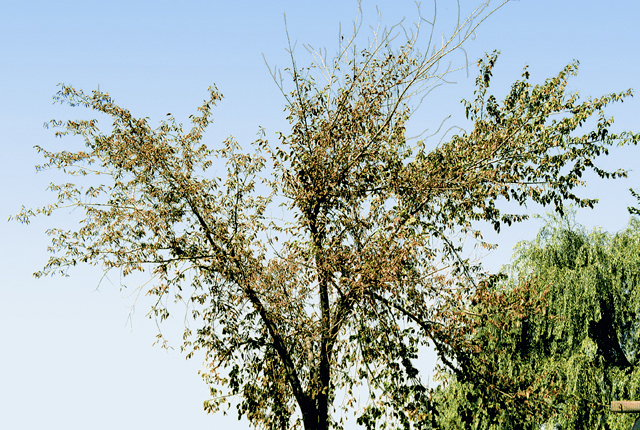
Elm leaf scorch | Elm
DISEASE: Elm leaf scorch
HOST: Elm (Ulmus americana)
PATHOGEN: Xylella fastidiosa
SOURCE: W. Sinclair
DISEASE: Pseudomonas leaf spot
HOST: Marigold
Marigolds with yellow apical chlorosis attributed to toxin production by the pathogen.
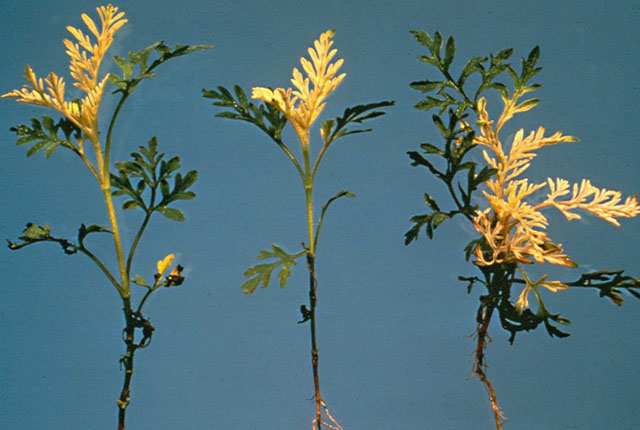
Pseudomonas leaf spot | Marigold
DISEASE: Pseudomonas leaf spot
HOST: Marigold (Tagetes erecta)
PATHOGEN: Pseudomonas syringae pv. tagetis
SOURCE: R. Durbin
DISEASE: Pseudomonas leaf spot
HOST: Marigold
Chlorotic leaves with total loss of chlorophyll. Disease is also known as toxic chlorosis.
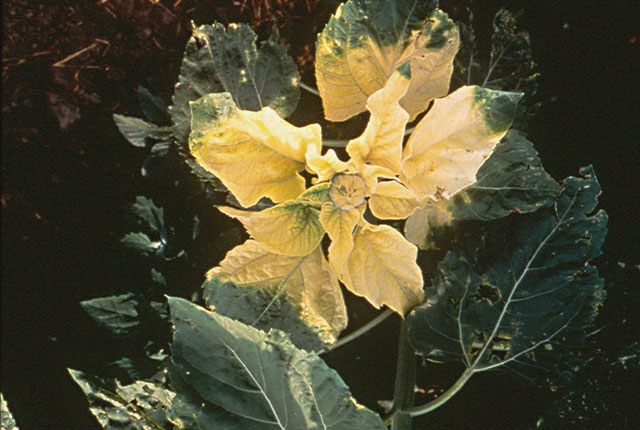
Pseudomonas leaf spot | Marigold
DISEASE: Pseudomonas leaf spot
HOST: Marigold (Tagetes erecta)
PATHOGEN: Pseudomonas syringae pv. tagetis
SOURCE: R. Durbin
DISEASE: Pseudomonas leaf spot
HOST: Marigold
Plants with bright yellow apical chlorosis.
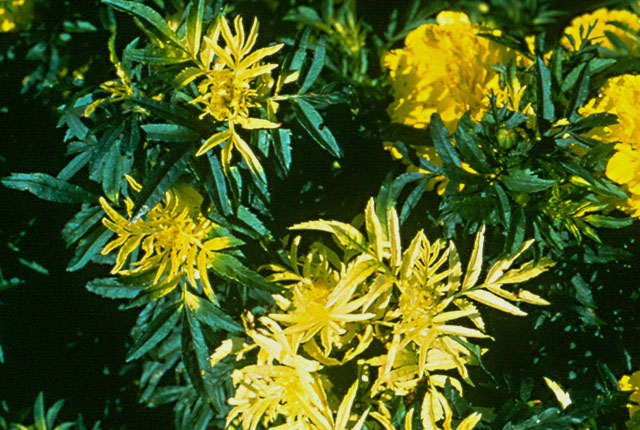
Pseudomonas leaf spot | Marigold
DISEASE: Pseudomonas leaf spot
HOST: Marigold (Tagetes patula)
PATHOGEN: Pseudomonas syringae pv. tagetis
SOURCE: R. Durbin
DISEASE: Pseudomonas leaf spot
HOST: Primrose
Leaf with brownish red spots and reddening of adjacent areas. Disease begins as small, water-soaked lesions that later coalesce into large necrotic spots.
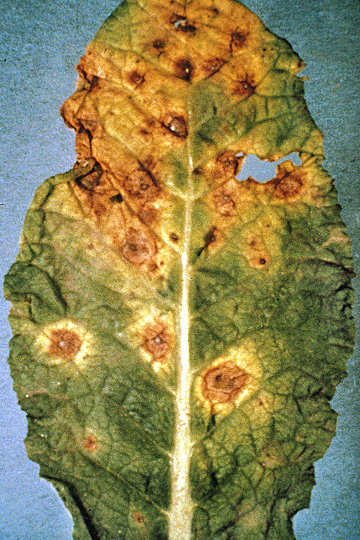
Pseudomonas leaf spot | Primrose
DISEASE: Pseudomonas leaf spot
HOST: Primrose (Primula sp.)
PATHOGEN: Pseudomonas syringae pv. primulae
SOURCE: APS


